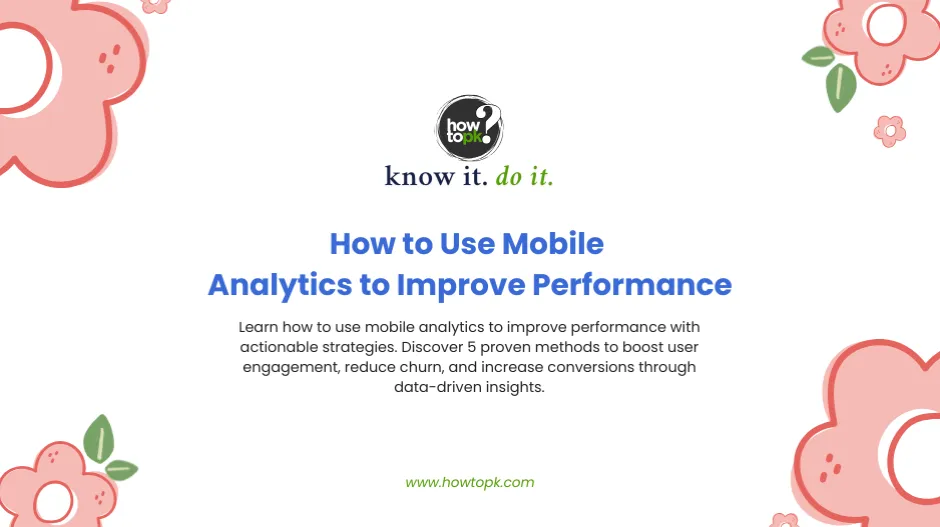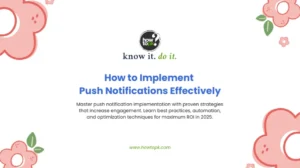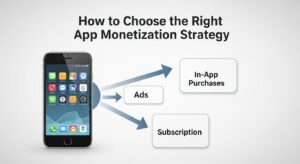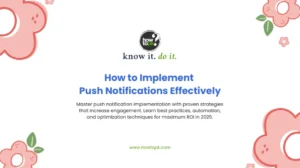Let’s start with a fundamental question: What specific challenges are you facing with your mobile app’s performance right now? Are you struggling with user retention, conversion rates, or perhaps understanding why users abandon certain features?
Understanding your current pain points will help us explore how mobile analytics to improve performance can address your specific needs. Mobile analytics has evolved dramatically, and the strategies that worked even two years ago may no longer be sufficient in today’s competitive landscape.
What Makes Mobile Analytics Essential for Performance Optimization?
Before diving into implementation strategies, consider this: How do you currently measure success in your mobile application? Many organizations rely on surface-level metrics like downloads or basic user counts, but these don’t reveal the deeper story of user behavior and performance bottlenecks.
Mobile analytics provides the foundation for data-driven decision making by revealing:
- User journey patterns and drop-off points
- Feature adoption rates and engagement levels
- Performance issues affecting user experience
- Revenue attribution and conversion funnels
- Real-time user behavior insights
The key differentiator in 2025 is moving beyond vanity metrics toward actionable performance indicators that directly impact your bottom line.
1. Implementing Comprehensive User Journey Mapping
How well do you understand the path users take through your application? User journey mapping through mobile analytics to improve performance reveals critical insights about user behavior patterns.
Start by identifying your key user flows:
- Primary conversion paths: Track users from app launch to desired actions (purchases, sign-ups, content consumption). Use tools like Google Analytics 4 or Mixpanel to visualize these journeys with funnel analysis.
- Feature discovery patterns: Monitor how users discover and adopt new features. This data helps prioritize development resources and identify underperforming features that may need redesign or removal.
- Abandonment analysis: Examine where users typically drop off. Are there specific screens or actions that consistently cause users to leave? These friction points represent immediate opportunities for performance improvement.
What questions would help you better understand your users’ journey? Consider tracking micro-interactions like scroll depth, tap patterns, and time spent on specific screens. This granular data often reveals performance issues that aggregate metrics miss.
2. Optimizing App Performance Through Real-Time Monitoring
Performance issues directly impact user satisfaction and retention. How quickly does your app respond to user actions? Even millisecond delays can significantly affect user experience and conversion rates.
Implement comprehensive performance monitoring using mobile analytics to improve performance by focusing on:
- Application response times: Monitor API calls, database queries, and UI rendering speeds. Tools like New Relic provide detailed performance breakdowns across different devices and network conditions.
- Crash analytics: Track and prioritize crash reports based on user impact. Not all crashes are equal – focus first on issues affecting your highest-value user segments.
- Memory and battery usage: Optimize resource consumption to prevent device performance degradation. Users quickly abandon apps that drain battery or cause device slowdowns.
Consider this practical approach: Set performance benchmarks based on your user expectations. For e-commerce apps, page load times under 2 seconds typically correlate with higher conversion rates, while social apps can tolerate slightly longer load times if the content quality justifies the wait.
Performance Metric | Target Benchmark | Impact on User Experience |
App Launch Time | < 3 seconds | Critical for first impressions |
Screen Transition | < 500ms | Affects perceived responsiveness |
API Response | < 2 seconds | Impacts task completion rates |
Crash Rate | < 1% sessions | Directly correlates with retention |
3. Leveraging Predictive Analytics for Proactive Optimization
What if you could identify performance issues before they impact users? Predictive analytics transforms reactive problem-solving into proactive optimization strategies.
Modern mobile analytics to improve performance includes machine learning capabilities that identify patterns and predict future performance trends:
- Churn prediction: Identify users likely to abandon your app based on behavior patterns. Early intervention through personalized engagement can significantly improve retention rates.
- Performance degradation forecasting: Predict when app performance might decline based on usage patterns, server load trends, and historical data.
- Feature adoption modeling: Predict which features new users are most likely to engage with, enabling personalized onboarding experiences.
How might predictive insights change your development priorities? Instead of waiting for problems to emerge, you can allocate resources toward preventing issues that analytics predict will occur.
4. Personalizing User Experiences Through Behavioral Segmentation
Generic optimization approaches often miss the mark because different user segments have distinct needs and behaviors. How do you currently segment your user base for analysis?
Effective behavioral segmentation using mobile analytics involves:
- Value-based segmentation: Group users by lifetime value, purchase frequency, or engagement levels. High-value users might tolerate more complex features, while casual users need streamlined experiences.
- Usage pattern analysis: Identify power users, occasional users, and at-risk segments. Each group requires different optimization strategies and performance priorities.
- Geographic and temporal insights: Understanding when and where users engage with your app helps optimize server resources and content delivery.
Consider creating dynamic user personas based on real behavioral data rather than static demographic assumptions. This approach enables more targeted performance improvements that resonate with actual user needs.
5. Converting Insights into Actionable Performance Improvements
Data collection without action provides no value. How do you currently translate analytics insights into concrete improvements?
Transform mobile analytics insights into results through systematic testing and optimization:
- A/B testing framework: Test performance improvements with controlled user groups before full deployment. This approach minimizes risk while validating optimization effectiveness.
- Feature flagging: Implement gradual rollouts for performance improvements, allowing quick reversals if issues arise.
- Cross-functional collaboration: Ensure analytics insights reach development, design, and product teams who can implement changes.
The most successful organizations establish clear processes for moving from insight to action. Consider implementing weekly performance reviews where teams analyze recent data and commit to specific improvement initiatives.
Advanced Mobile Analytics Implementation Strategies
Ready to take your analytics implementation to the next level? Advanced strategies require deeper technical integration but provide significantly more actionable insights.
- Real-time event tracking: Implement custom events that capture business-critical interactions. Tools like Firebase Analytics offer robust event tracking capabilities with real-time reporting.
- Cohort analysis: Track user groups over time to understand how performance improvements affect long-term engagement and retention patterns.
- Revenue attribution: Connect performance metrics directly to revenue outcomes, enabling ROI calculations for optimization efforts.
What specific metrics would provide the most value for your organization’s goals? Focus on implementing analytics that directly support your primary business objectives rather than tracking everything possible.
Measuring Success: Key Performance Indicators
How will you know if your mobile analytics implementation is successful? Establish clear KPIs that align with business objectives:
- User engagement metrics: Session duration, screen views per session, feature adoption rates
- Technical performance indicators: App load times, error rates, successful transaction completion
- Business impact measures: Conversion rates, revenue per user, customer acquisition costs
Regular performance reviews should examine trends in these metrics and identify areas for continued optimization.
Getting Started: Your Next Steps
Where should you begin implementing these mobile analytics to improve performance strategies? Start with these practical steps:
- Audit current analytics implementation: Identify gaps in your existing tracking and measurement capabilities
- Define success metrics: Establish clear KPIs aligned with business objectives
- Implement comprehensive tracking: Deploy analytics tools that capture relevant user behavior and performance data
- Establish review processes: Create regular cadences for analyzing data and implementing improvements
- Test and iterate: Use A/B testing to validate optimization efforts before full deployment
The key to success lies in starting small, measuring results, and gradually expanding your analytics capabilities as you demonstrate value to stakeholders.
Mobile analytics represents a powerful opportunity to transform app performance through data-driven insights. By implementing these strategies systematically and focusing on actionable metrics, you can create significant improvements in user experience, engagement, and business outcomes.
What will be your first step in leveraging mobile analytics to improve your app’s performance? The data is waiting – the question is whether you’re ready to act on the insights it provides.











